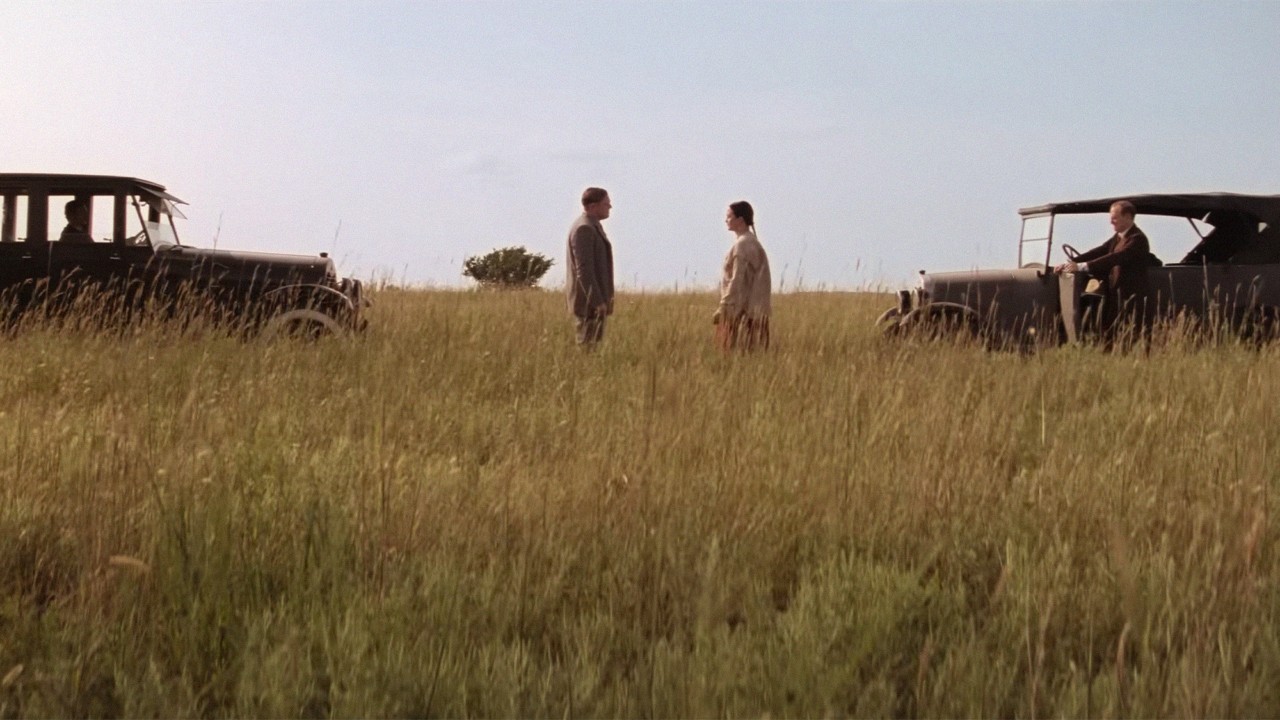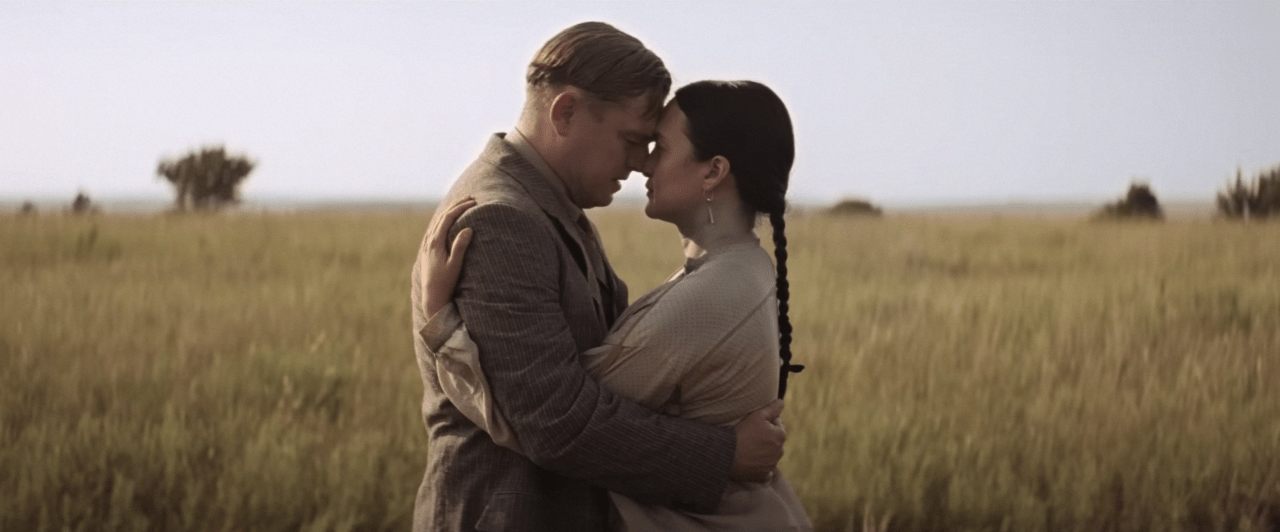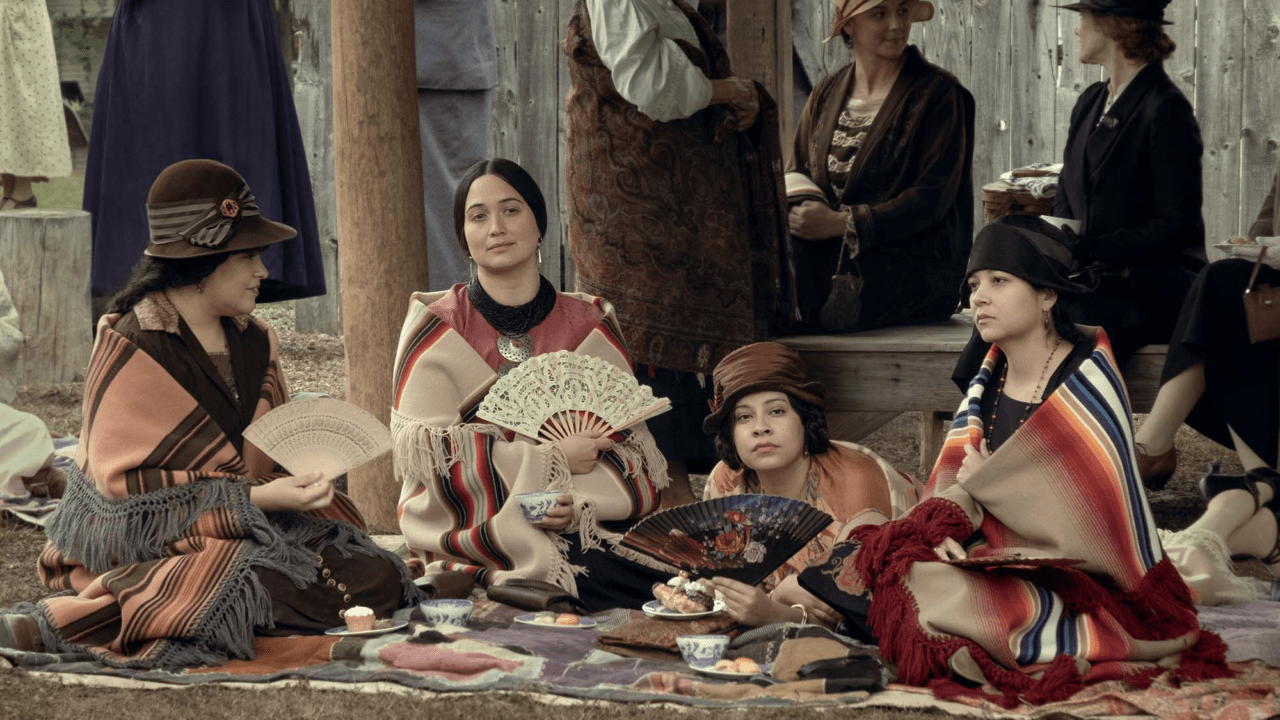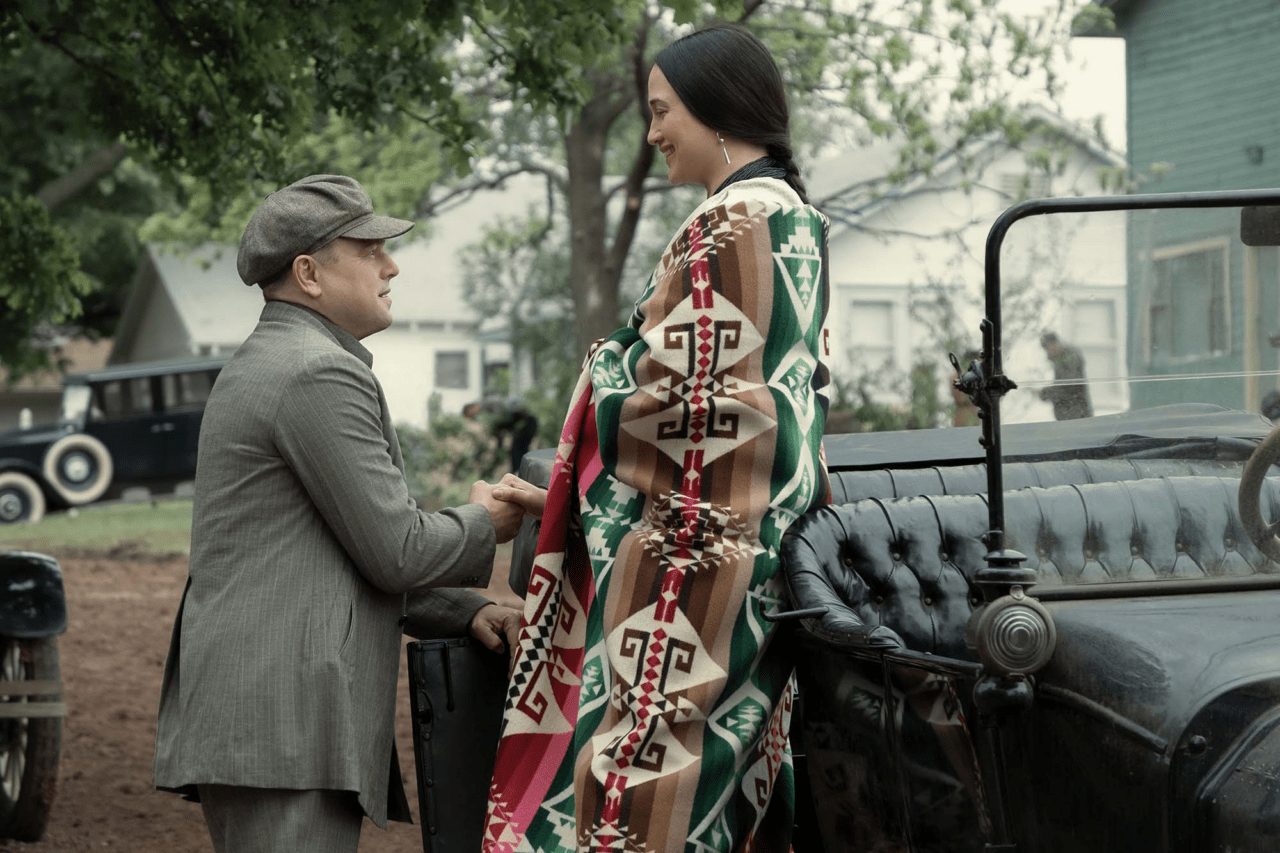

Photographs by Paramount Pictures
Words by Leila Latif
The story behind Martin Scorsese’s latest film, Killers of the Flower Moon, kept evolving over the many years that he worked on the script.
At first, the central focus of the adaptation of David Gann’s 2017 non-fiction book, Killers of the Flower Moon: The Osage Murders and the Birth of the FBI, centered on Tom White (played by Jesse Plemons), the chief investigator of a series of murders of Osage peoples in Osage County, Oklahoma in the 1920s after large oil deposits were found to be on their land. The count of Osage murder victims officially reaches 20, but Grann in his book speculates that hundreds more may have been killed because of their ties to the tribe’s rights to the oil rich land that made them the wealthiest people per capita on the planet.
But in order to authentically represent the tragedy of the Osage Nation, Scorsese eventually reframed the film’s heart to be Mollie Burkhart (Lily Gladstone) and Ernest Burkhart (Leonardo DiCaprio). An Osage woman and her white World War One veteran husband, who betrays his wife and their children to participate in their people’s demise. The heart of the film plays its cruelest hand as Scorsese grimly stated during a press conference at the British Film Institute: “Ernest and Molly, despite everything, they are in love.”

What makes the film so apocalyptic, and the tragedy of the colonization of Indigenous people across the US so rawly felt, is Ernest’s embodiment of the past and present betrayals. “I can show in that loving relationship an incredible betrayal of trust,” Scorsese said, adding that he wanted to show how “the insidious nature of complicity finds its way, and the next thing you know its genocide. That’s what I wanted to get at in the movie.”
Killers of the Flower Moon shows a nation on the brink of apocalypse in a state of grief even as they dance in the geysers of oil that erupt from their land. They are aware that, with this resource, and the money and attention that comes with it, their own demise will be sped up, being engulfed and destroyed by a capitalist system that has no interest in what their land and their people’s true value is. The predators that surround them—in the form of capitalists and ruthless opportunists—have no respect for the land, its people, or preserving the world for future generations. The film has awful parallels with the impending climate apocalypse today. All that is needed for the end of the world as we know it is the pursuit of profit by those that purport to have love in their hearts to passively stand by. A people, a culture, a landscape are being wiped out and it’s not one grisly act, but death by a thousand small betrayals.

Ernest is only one small pawn in this cruel system, having returned from his military service to stay with his uncle, Robert De Niro’s “King” William Hale. Hale is a political leader in Osage County, who made his fortune through a combination of cattle ranching and corruption. But he hides behind a smokescreen of philanthropy and benevolent civic duty as a part of an elaborate plot to infiltrate and then annihilate the Osage peoples to gain the “head rights” for their oil wealth. He embodies the proto-typical white “savior,” enriching himself while spinning a performative love for the Osage, whom he describes as “the most beautiful people in the world.” Privately, however, he describes them as “sickly,” foreshadowing the plague of violence he is about to unleash upon them.
The Osage are viewed by the white population around them as antithetical to their “hardworking value.” They resent the Osage as having not worked so-called “hard enough” to have their money, having not built enough or destroyed enough to line their pockets. Scorsese described it as “a Protestant idea of reaping and sowing. They didn’t work, they just stood there and oil came out. They didn’t work so they didn’t deserve it.” This resentment is further compounded by the Osage people’s values not being centered around money, and that they see the land as sacred—not plots to be drained.
But the Osage’s value of people over dollars in a bank account is, in fact, to perfectly understand money. As Molly Burkhart devastatingly lays out as yet another of her family lies dead, “We never prayed for a great life. We just prayed for life.” In stark contrast, 10 minutes later in the film, Ernest Buckhart sits with a wide grin on his face and, despite having as much money as he could ever need, has just gleefully robbed an Osage grave for the corpses’ jewelry. “I just love money! I darn near love it as much as I love my wife,” he says.
“The insidious nature of complicity finds its way, and the next thing you know its genocide. That’s what I wanted to get at in the movie.”
Ernest and those around him identify with the capitalists and colonizers whose love of money precedes everything, and whose idea of progress involves squeezing every resource and every worker of every drop. During his talk, Scorsese highlighted the parallels between Ernest Buckhart and one of his previous characters: greed-is-good Wall Street nightmare Jordan Belfort. In reality, he said, recently, “we voted him for President!” After all, it was Trump who convinced swathes of white Americans that he had their best interests and future at heart, demonizing people of color and persuading them that leaving The Paris Agreement and speeding towards climate catastrophe would make America great “again.”
In Scorsese’s film, the rotten core at the heart of the American dream is exposed.
As the Osage face annihilation and the land is drained, the Tulsa Race Massacre happens in the distance, women are treated as chattel and the Ku Klux Klan marches down main street. This is a world of a thousand stabs to the back of a generation who has not even been born. Where 100 years later, when the race to decarbonize should be embraced for the wellbeing of people and the planet, the system of self-interest that is in its infancy in Killers Of The Flower Moon stands in the way—empowered by all the supposedly “good” men who do nothing.
It would be reductive to look at the film, or the world around us, and see the genocide of the Osage or the destruction of the planet as entirely down to inaction; what political thinker Hannah Arendt once called “the banality of evil” to describe the evil deeds performed without evil intentions. Rather, it is because of a pervasive thoughtlessness and a disengagement from the reality of their actions. Ernest may love his wife—and fracking executives, fossil fuel lobbyists, and supreme court justices may not lay awake at night plotting to destroy the planet. But at their core, these people and policies are informed ones. They all choose to sacrifice the lives of others, and sell their futures to the highest bidder.

It’s no surprise that, at this stage of his life and career, Scorsese is contemplating and creating work about being on the brink of non-existence. He has spoken openly about the need for cinema to work to guarantee its own future, and works tirelessly outside of his directing to preserve world cinema for future generations. In the opening scene, the Osage mourn not only the death of a “pipe person” but contemplate how “our children will grow to speak another language.” And while it’s clear that the film seeks to correct a glossed-over, whitewashed part of American history, there is a sense that Scorcese’s palpable sense of grief and loss speaks to the medium itself and how in its most potent forms it can shift a generation’s perspective on the world.
As the Osage people are betrayed by spouses, friends, and lovers, Killers of the Flower Moon is a grimly stark reminder of just how brutal a world humanity is capable of creating. That, as forests fall, the planet warms, and scientists beg us to heed their warnings, the innate goodness of humanity cannot be relied upon to stop the world from burning. Many cultures and people have been lost to the annals of time, of colonialism—there is no shortage of genocides throughout history. But watching Killers Of The Flower Moon is a reminder that many of our futures are currently as precarious as the Osage’s once was. To do nothing to prevent an apocalypse is to be complicit in it.
In Killers of the Flower Moon, The Tragedy of Colonialism Is a Thousand Small Betrayals


